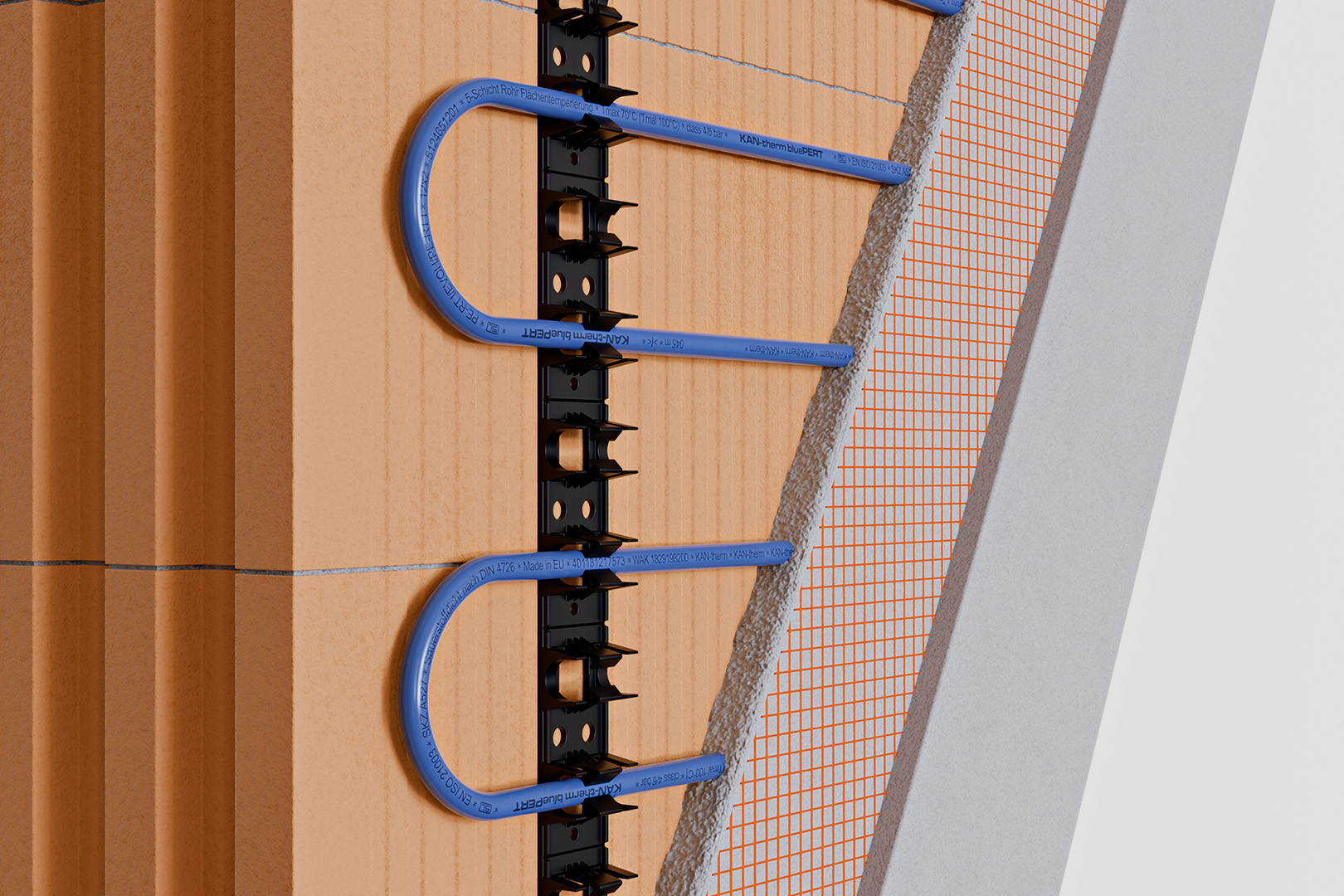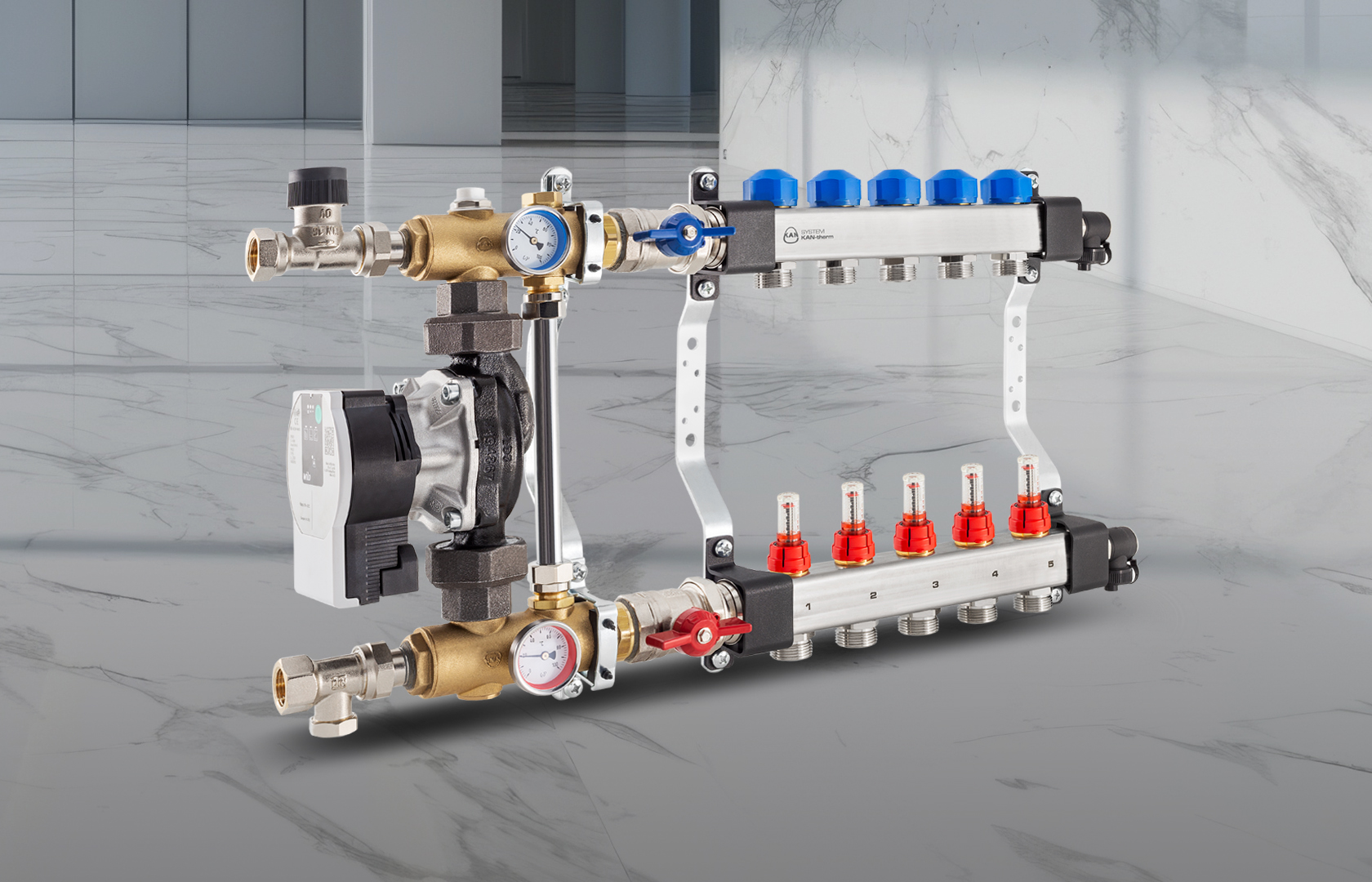UPDATES in KAN SET:
- Surface systems:
- Calculation of the resulting cooling capacity of the installation
In the latest version of KAN SET, the possibility to design surface systems - a ceiling system and a wall system - has been introduced. A function for calculating the resulting cooling capacity of an installation has also been added.
Before starting the design of a surface system, the user should declare the parameters related to the construction of the heating/cooling surface. Information concerning the construction will be inherited automatically directly from the drawing - which significantly reduces data input time.
When designing a wall system, we have two options for inputting receivers - we can insert a simplified graphic symbol of the radiator in the drawing or insert the so-called drawing symbol in the wall and then edit this wall and draw the shape of the radiator. The second option applies only to designing on a plan.
When designing a ceiling system, it is necessary to switch the view from floor plan to ceiling view. On this layer, we can draw the ceiling heating area. It is necessary to introduce risers - both from the ceiling and floor level. This is how we connect the installations to the source. This is necessary in
If we design the central heating installation on plan, the programme automatically generates a three-dimensional visualization, which allows us to check precisely whether all the components have been connected, whether the receivers are at the right level, or whether there are any collisions between the wires.
Both ceiling and wall systems can be designed in drawing as well as on the plan.
A new function that has been published in KAN SET is the calculation of the resulting cooling capacity of the installation. After designing a surface installation for heating parameters, the programme determines the resultant cooling capacity in the case of switching to cooling mode. This calculation will be performed if the CC (Central Cooling) module is activated in the basic data. KAN SET the refrigerant flow rate for cooling mode is assumed as for the heating system.
Once the calculations have been made, the resulting statements can be read both in the drawing - e.g. on a tabular label connected to the manifold and from the general tabular results.





